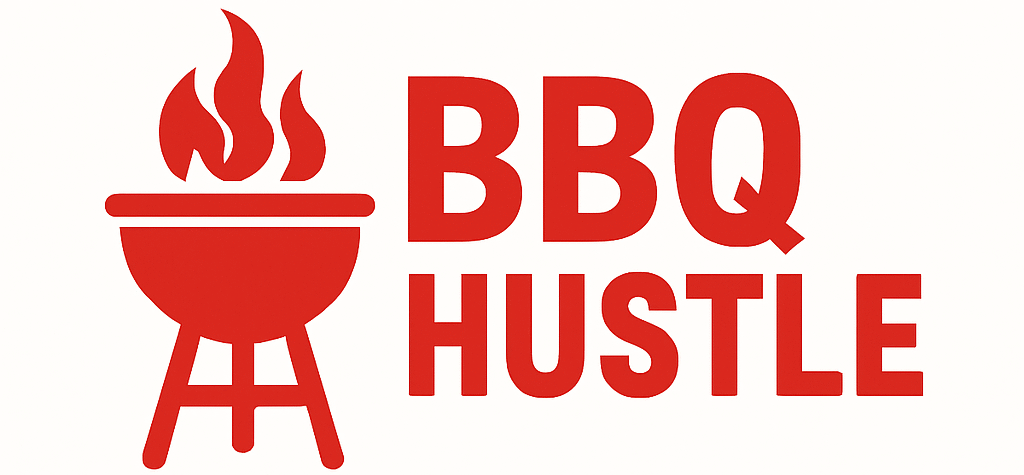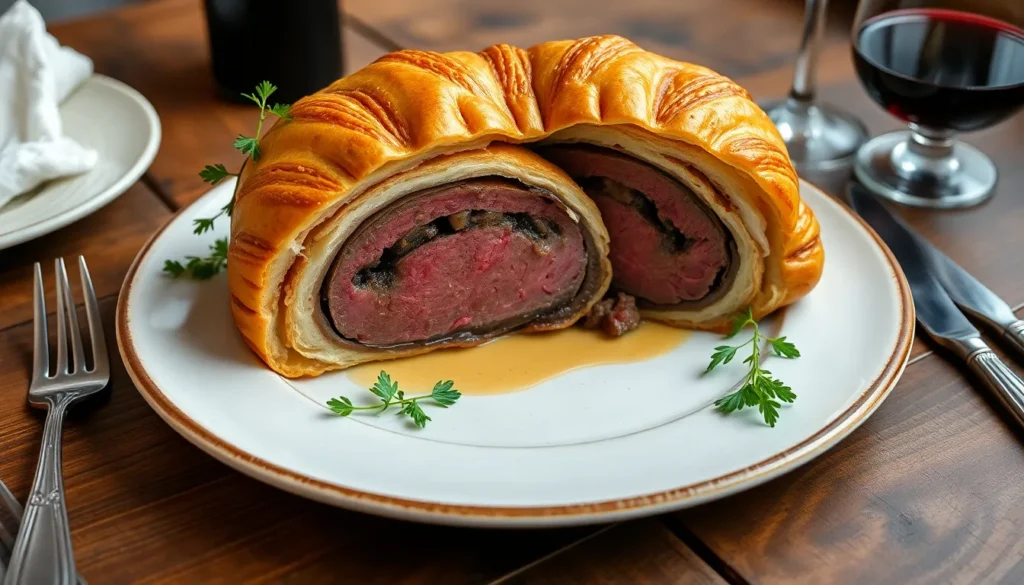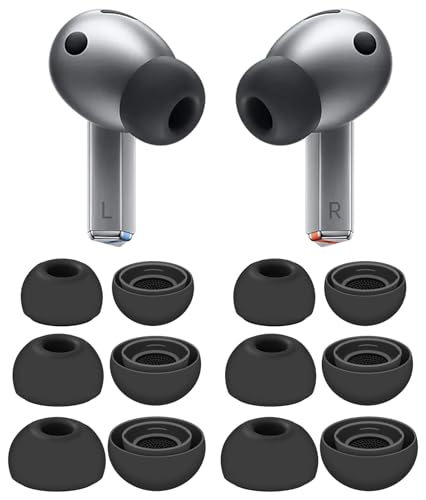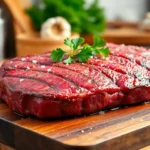Gordon Ramsay’s Beef Wellington stands as the ultimate test of culinary skill and one of the most celebrated dishes in fine dining. This show-stopping centerpiece transforms tender beef tenderloin into an elegant masterpiece wrapped in flaky puff pastry with layers of savory duxelles and prosciutto.
We’ve perfected Ramsay’s legendary technique to bring this restaurant-quality dish straight to your home kitchen. While it requires patience and precision, the incredible results make every step worthwhile. The combination of perfectly seared beef, earthy mushroom duxelles, and golden pastry creates an unforgettable dining experience that’ll impress even the most discerning guests.
Don’t let the complexity intimidate you – we’ll guide you through each crucial step of Gordon’s time-tested method. From achieving the perfect sear to wrapping the Wellington without soggy bottoms, our detailed instructions ensure your Beef Wellington turns out flawlessly every single time.
What Makes Gordon Ramsay’s Beef Wellington Special
We’ve studied countless chefs attempt this legendary dish, yet Gordon Ramsay’s approach stands apart through his meticulous attention to detail and innovative techniques. His method transforms what many consider an intimidating recipe into a manageable masterpiece that delivers consistent results.
The chef’s signature technique begins with proper searing that creates a beautiful caramelized crust while maintaining the beef’s internal temperature. We appreciate how Ramsay emphasizes the importance of resting the seared tenderloin completely before wrapping, preventing the pastry from becoming soggy.
Ramsay’s duxelles preparation sets his version apart from traditional recipes. He combines finely chopped mushrooms with shallots, garlic, and fresh thyme, then cooks the mixture until completely dry. This crucial step removes excess moisture that could compromise the pastry’s integrity.
The prosciutto layer serves a dual purpose in his method. We observe how he arranges thin slices to create a protective barrier between the beef and duxelles while adding another layer of savory flavor. His technique ensures the prosciutto adheres properly and doesn’t slide during the wrapping process.
Temperature control becomes paramount in Ramsay’s approach. He uses a meat thermometer to achieve precise doneness, typically aiming for 125°F for medium rare. We find this scientific approach eliminates the guesswork that often leads to overcooked or undercooked results.
His pastry handling technique prevents common pitfalls that plague home cooks. Ramsay rolls the puff pastry to an even thickness and seals edges with beaten egg wash, creating a golden exterior that maintains structural integrity throughout cooking.
The final touch involves his scoring pattern on top of the pastry. We notice how these decorative cuts serve both aesthetic and functional purposes, allowing steam to escape while creating an elegant presentation worthy of fine dining establishments.
Essential Equipment and Tools
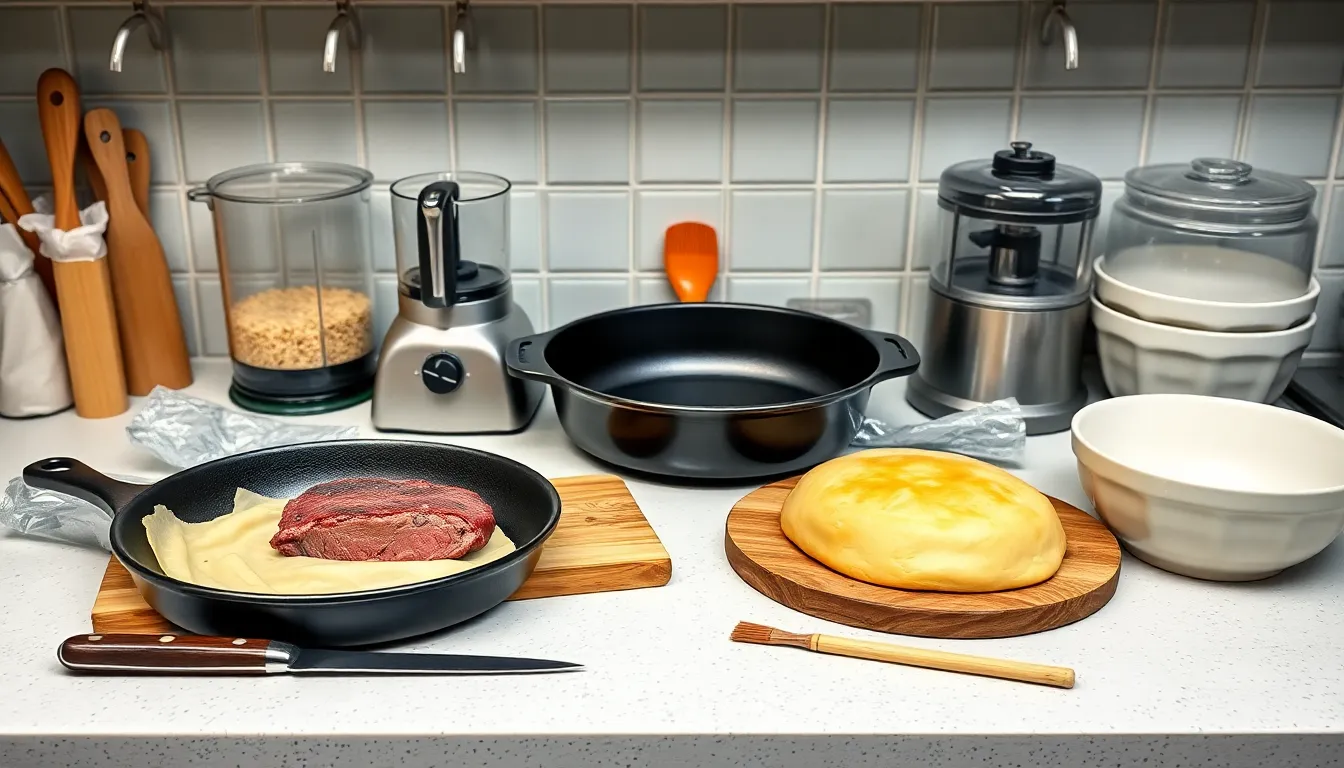
Creating Gordon Ramsay’s signature Beef Wellington requires exact equipment to achieve professional results. We’ve compiled the essential tools that make the difference between a good Wellington and a restaurant-quality masterpiece.
A cast iron skillet forms the foundation of our equipment list. This heavy-bottomed pan delivers the intense heat needed to sear the beef fillet properly. The searing process creates a flavorful, browned crust that adds color, depth, and flavor to the beef before it enters the oven. We recommend preheating the skillet until it’s smoking hot for optimal results.
Your chef’s knife serves as the workhorse for this recipe. The blade must be sharp enough to finely chop mushrooms into a coarse breadcrumb texture for the duxelles. Proper knife skills ensure even cooking and prevent the mushrooms from releasing excess moisture during preparation.
A food processor offers an optional but valuable alternative for mushroom preparation. We use it to pulse-chop the mushrooms finely without turning them into mush. This tool saves time while maintaining the proper texture that prevents soggy pastry.
Plastic wrap plays a crucial role in shaping our Wellington. We use it to tightly roll the beef with mushroom duxelles and prosciutto before wrapping in puff pastry. This technique ensures the Wellington holds its shape during the cooking process.
A baking sheet or roasting tray provides the stable surface needed for both roasting the beef and baking the completed Wellington. Choose a heavy-duty tray that won’t warp under high oven temperatures.
Our pastry brush serves dual purposes in this recipe. We use it first to brush Dijon mustard onto the seared beef, then later to apply egg wash on the puff pastry surface. This tool promotes even browning and creates the golden finish that makes Ramsay’s Wellington visually stunning.
Temperature control requires a properly calibrated oven preheated to 392°F (200°C). Consistent temperature ensures the pastry cooks evenly while the beef reaches the perfect internal temperature.
A cutting board provides our workspace for assembly. We recommend moistening it with a damp towel to keep the plastic wrap in place during the rolling process.
Mixing bowls help organize our ingredients and provide space for preparing the mushroom duxelles. Having multiple bowls keeps ingredients separated and makes assembly more efficient.
These tools work together to create the precision and control that Gordon Ramsay’s technique demands. Each piece of equipment serves a exact purpose in achieving the perfect balance of flavors and textures that define this iconic dish.
Ingredients

We organize Gordon Ramsay’s Beef Wellington ingredients into four distinct categories to ensure perfect preparation and assembly. Each component plays a crucial role in creating the signature layers that make this dish extraordinary.
For the Beef
- 1 to 2 whole beef fillets (around 1 to 2 lbs center-cut beef tenderloin or fillet)
- 2 to 3 tablespoons olive oil or grapeseed oil
- 2 teaspoons sea salt
- 1 teaspoon black pepper
- 2 tablespoons Dijon mustard
The beef tenderloin forms the heart of our Wellington and requires premium quality meat for optimal results. We select center-cut portions that offer consistent thickness throughout the fillet. High-heat oils like grapeseed oil work best for achieving the perfect sear without burning. Dijon mustard acts as both a flavor enhancer and tenderizing agent when applied after searing.
For the Duxelles
- 16 oz (about 500g) finely diced wild mushrooms or baby bella mushrooms
- 2 tablespoons olive oil
- 1 teaspoon sea salt
- ½ teaspoon black pepper
- 1 teaspoon fresh thyme leaves
Our mushroom duxelles creates the moisture barrier that prevents soggy pastry while adding earthy flavors. Wild mushrooms provide superior taste but baby bella mushrooms offer excellent results as a more accessible option. Fresh thyme elevates the mushroom mixture with aromatic herbs. We ensure mushrooms are cleaned thoroughly and diced uniformly for even cooking.
For the Pancake Layer
- 1 large egg
- ½ cup all-purpose flour
- ½ cup milk
- ½ teaspoon chopped fresh chives
- ½ teaspoon fresh thyme leaves
- ¼ teaspoon sea salt
The crepe layer serves as Ramsay’s innovative solution for preventing moisture from reaching the pastry. We create a thin pancake that wraps around the prosciutto and mushroom layers. Fresh herbs infuse the crepe with additional flavor complexity. Room temperature ingredients blend more easily for smooth batter consistency.
For the Puff Pastry Assembly
- 8 slices of prosciutto
- 1 sheet (about 500g or 1 lb) puff pastry, thawed
- 4 to 5 egg yolks
Prosciutto provides the protective protein layer that adds saltiness and prevents moisture transfer. We use high-quality puff pastry that has been properly thawed for easy rolling and shaping. Egg yolks create the golden wash that gives our Wellington its signature glossy appearance while helping seal the pastry edges. Store-bought puff pastry works perfectly when handled correctly according to Ramsay’s techniques.
Prep Work Before You Start
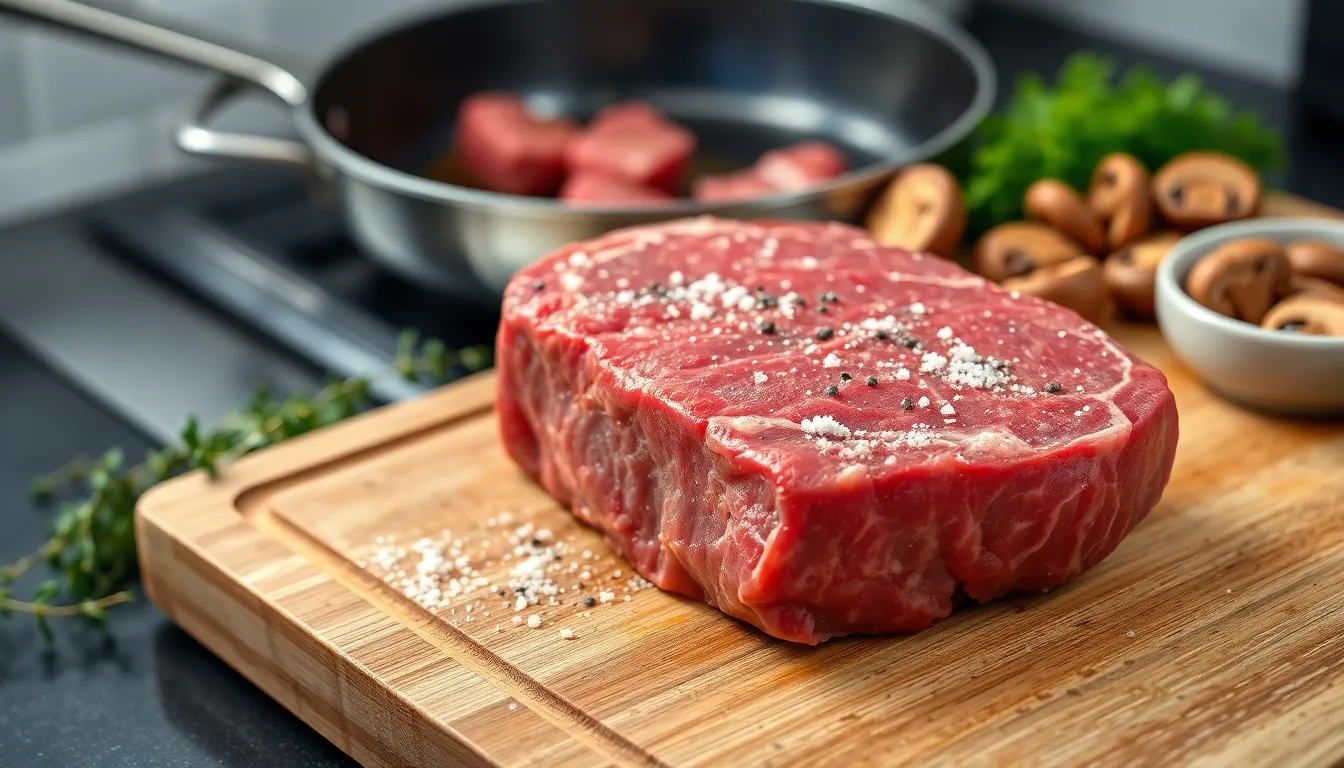
Success with Gordon Ramsay’s Beef Wellington hinges on thorough preparation and precise timing. We need to complete all prep work before assembly begins to ensure each component performs its critical role in this layered masterpiece.
Preparing the Beef Tenderloin
We start by preheating our oven to 392°F (200°C) for optimal cooking temperature. Our beef tenderloin should be either 2 fillets weighing approximately 400g each or a single whole tenderloin around 500g for proper portion sizing.
Season the beef liberally with salt and pepper on all surfaces. Heat olive oil or grapeseed oil in a hot pan until it shimmers. Sear each side of the beef for exactly 1 minute to create that essential caramelized crust while keeping the interior raw.
Remove the beef from heat immediately after searing. Brush the warm surface generously with English mustard or Dijon mustard while the meat retains its heat. Allow the beef to rest completely and reserve any accumulated juices for our mushroom duxelles.
Making the Mushroom Duxelles
Clean and finely chop 500g to 1lb of mixed wild mushrooms into uniform pieces. We recommend using a combination of varieties for complex flavor development.
Heat butter in a large pan over medium heat and add fresh thyme leaves. Cook the chopped mushrooms while stirring frequently to encourage moisture evaporation. Continue cooking until we achieve a thick paste-like consistency with no visible liquid remaining.
Season our duxelles with salt and pepper to taste. Optional aromatics like minced shallots and cracked peppercorns enhance the earthy mushroom base. Pour the reserved beef juices directly over the finished duxelles to incorporate those precious flavors from our seared tenderloin.
Creating the Pancake Layer
Prepare thin savory pancakes using eggs, flour, milk, chopped chives, thyme flowers, and salt. Mix the batter until smooth and cook paper-thin pancakes that will serve as our moisture barrier.
Trim the pancakes to appropriate sizes and arrange them in overlapping layers on plastic wrap across our work surface. Layer thin slices of prosciutto or Parma ham directly onto the pancake base.
Spread our cooled mushroom duxelles evenly over the ham layer. Position the mustard-coated beef at one edge of our prepared assembly. Use the plastic wrap to roll everything tightly into a compact package and refrigerate for 20 minutes to set the shape before final pastry wrapping.
Instructions

Now that we have our ingredients prepared and tools ready, let’s walk through the precise steps to create Gordon Ramsay’s masterpiece. Each stage builds upon the previous one to create those signature layers that make this dish extraordinary.
Searing the Beef
We begin by seasoning our beef tenderloin generously with salt and pepper on all sides. Press the seasoning firmly into the meat to ensure proper flavor penetration throughout the tenderloin. Heat a cast iron skillet with grapeseed or olive oil until the pan becomes very hot and begins to smoke slightly.
Place the seasoned beef into the hot skillet and sear for exactly 1 minute on each side. This timing creates a beautiful browned crust while keeping the interior completely rare. Remove the beef from the skillet immediately and brush all surfaces with Dijon mustard while the meat remains hot. The mustard adds flavor depth and helps the mushroom layer adhere properly to the beef.
Preparing the Mushroom Mixture
We create the duxelles by finely chopping our mixture of wild and chestnut mushrooms into small, uniform pieces. Heat butter in a large skillet and add the chopped mushrooms along with shallots, fresh thyme leaves, salt, pepper, and peppercorns.
Sauté the mushroom mixture over medium heat, stirring frequently until most moisture evaporates completely. Continue cooking until the mixture transforms into a thick, paste-like consistency that holds together when pressed. For extra flavor dimension, deglaze the pan with a splash of white wine or red wine vinegar before removing from heat.
Making the Crepe Layer
We prepare thin crepes using a simple batter of eggs, flour, milk, fresh herbs like chives and thyme, and salt. Whisk these ingredients until smooth and let the batter rest for 10 minutes to eliminate any lumps.
Heat a non-stick pan over medium heat and pour just enough batter to create paper-thin crepes. Cook each crepe until set but not browned, then stack them on a plate. We need enough crepes to completely wrap around our beef tenderloin, so prepare 4-5 crepes depending on the size of your beef.
Assembly Process
We lay overlapping plastic wrap on our work surface to create a large, smooth working area. Arrange the crepes vertically on the plastic wrap, trimming them to match the length of our beef tenderloin.
Layer thin slices of Parma ham or prosciutto over the crepes, creating an even coverage. Spread our cooled mushroom duxelles evenly across the ham layer, seasoning lightly with additional salt and pepper if needed.
Position the mustard-coated beef at one edge of our layered stack. Using the plastic wrap as our guide, we roll the beef tightly into a compact log, ensuring the crepes, ham, and mushrooms wrap snugly around the tenderloin. Twist the ends of the plastic wrap to form a secure package and refrigerate for 20 minutes to set the shape.
Wrapping in Puff Pastry
We roll out our thawed puff pastry on a floured surface until it’s large enough to completely encase our beef package. The pastry should extend at least 2 inches beyond the beef on all sides.
Remove the plastic wrap from our chilled beef and place it in the center of the pastry. Wrap the pastry firmly around the beef, sealing the seam and ends with gentle pressure. Trim any excess pastry, leaving just enough to create a clean seal.
Place the wrapped Wellington seam-side down on a baking sheet and chill for another 15 minutes. Before baking, we score the pastry lightly in a decorative pattern and brush generously with egg wash made from beaten egg yolk and water. Bake at 400°F for 15-20 minutes until the pastry achieves a golden brown color and sounds hollow when tapped.
Cooking Directions

We follow Gordon Ramsay’s precise cooking method to achieve restaurant-quality results. The key lies in maintaining proper temperature control and timing throughout the baking process.
Oven Temperature and Timing
We preheat our oven to 200°C (400°F) or Gas mark 6 for optimal cooking conditions. This temperature ensures the puff pastry develops its signature golden color while the beef cooks evenly inside.
Once we place the Wellington in the preheated oven we bake it for 15 to 20 minutes. The exact timing depends on the thickness of our beef tenderloin and desired doneness level. We monitor the pastry carefully during cooking to ensure it achieves that perfect golden crisp exterior without overcooking the beef.
Checking for Doneness
We use a meat thermometer to guarantee precision when checking our Wellington’s internal temperature. The probe should be inserted into the thickest part of the beef for accurate readings.
For medium-rare results we aim for an internal temperature of 125-130°F (52-54°C). Those preferring medium doneness should target 135°F (57°C). The pastry exterior should appear golden brown and feel crisp to the touch when properly cooked.
| Doneness Level | Internal Temperature |
|---|---|
| Medium-rare | 125-130°F (52-54°C) |
| Medium | 135°F (57°C) |
Resting the Wellington
We remove our Beef Wellington from the oven and allow it to rest for 10 minutes before slicing. This crucial resting period lets the juices redistribute throughout the meat maintaining tenderness and preventing them from running out when we cut into the pastry.
During this resting time the internal temperature continues to rise slightly completing the cooking process. We resist the temptation to slice immediately as this patience ensures each portion maintains its structural integrity and delivers the full flavor experience that makes Gordon Ramsay’s technique so exceptional.
Make-Ahead Tips

Proper timing transforms Gordon Ramsay’s Beef Wellington from a stressful try into a manageable culinary triumph. We can prepare several components in advance to streamline our cooking process and ensure restaurant-quality results.
Mushroom Duxelles Preparation
We recommend preparing the mushroom duxelles up to 24 hours ahead of serving. The finely chopped mushrooms sautéed with butter, thyme, salt, and pepper create a thick paste that actually improves in flavor when refrigerated overnight. Store the cooled duxelles in an airtight container in the refrigerator and bring to room temperature before assembly.
Beef Preparation and Initial Assembly
Our beef fillet can be seared and mustard-coated several hours before final assembly. After searing each side for approximately 1 minute and brushing with Dijon mustard while hot, we allow the beef to cool completely before refrigerating. The prosciutto and duxelles assembly around the beef benefits from a 20-minute chilling period to firm up the shape before pastry wrapping.
Complete Make-Ahead Assembly
The fully assembled Wellington wrapped in puff pastry can be prepared earlier in the day and refrigerated until ready to bake. We wrap the completed Wellington tightly in plastic wrap to prevent the pastry from drying out. Before baking, we remove the Wellington from refrigeration 30 minutes before cooking to bring it closer to room temperature for even cooking.
Timing Strategy for Service
For optimal results, we suggest completing the mushroom duxelles and beef searing the day before serving. The morning of service, we assemble the Wellington with prosciutto and duxelles, then wrap in pastry. This approach allows us to focus entirely on proper baking and timing for our dinner guests without rushing through multiple preparation steps simultaneously.
Serving Suggestions
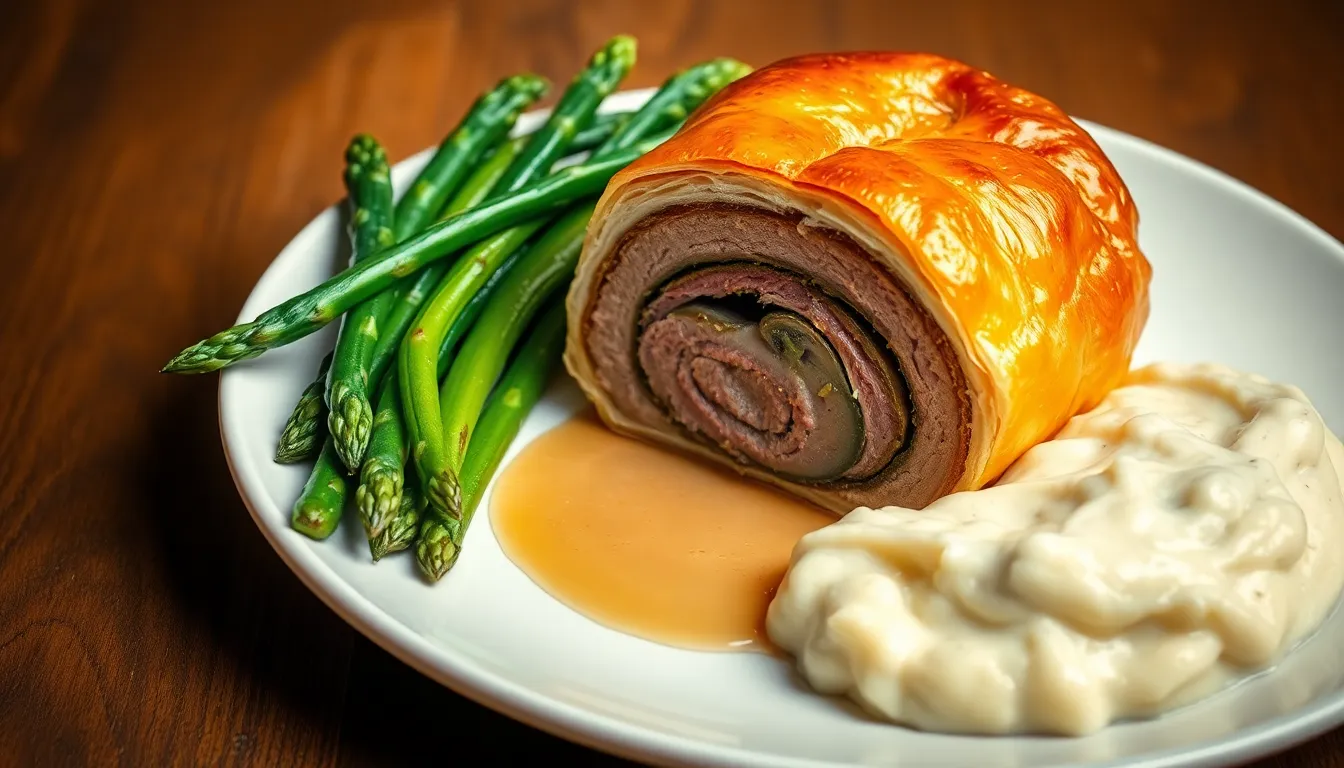
We believe that presenting Gordon Ramsay’s Beef Wellington properly elevates this magnificent dish from impressive to unforgettable. The key lies in carefully slicing the Wellington to showcase the perfectly cooked medium-rare beef center surrounded by the savory mushroom and prosciutto layers encased in crisp pastry.
Recommended Side Dishes
Roasted or mashed potatoes provide the perfect foundation to complement the richness of Beef Wellington. The creamy texture of mashed potatoes creates a luxurious contrast against the flaky pastry while roasted potatoes add a rustic element that balances the dish’s elegance.
Seasonal green vegetables bring essential freshness to cut through the Wellington’s intensity. Asparagus spears offer a crisp texture and subtle earthiness that pairs beautifully with the mushroom duxelles. Green beans provide a satisfying snap and bright color that creates visual appeal on the plate. Sautéed spinach delivers a delicate wilted texture that doesn’t compete with the Wellington’s complex flavors.
A rich red wine sauce or classic madeira sauce serves as the ultimate finishing touch for extra depth. These sauces enhance the beef’s natural flavors while adding moisture that complements each bite perfectly.
Wine Pairing Options
Red Burgundy or Pinot Noir creates an exceptional pairing with their natural earthiness and bright acidity that harmonizes beautifully with both the mushroom and beef flavors. These wines possess enough complexity to match the Wellington’s sophistication without overwhelming the palate.
Cabernet Sauvignon or Merlot offers fuller-bodied alternatives that complement the richness of both the meat and pastry components. Their robust tannins stand up to the dish’s bold flavors while providing structure that enhances each course.
Malbec or Bordeaux blends represent excellent choices that enhance the dish’s overall complexity. These wines bring depth and character that elevate the entire dining experience to restaurant-quality standards.
Pro Tips for Perfect Results

Our years of experience perfecting Gordon Ramsay’s Beef Wellington technique have taught us that success lies in mastering the critical details that separate amateur attempts from restaurant-quality results. Temperature control stands as the most crucial factor in achieving perfect doneness without compromising the pastry’s integrity.
Chill the Wellington before baking to ensure the pastry maintains its shape throughout the cooking process. We recommend refrigerating the assembled Wellington for at least 30 minutes before placing it in the oven. This chilling step prevents the puff pastry from becoming misshapen during baking and helps create those beautiful flaky layers that define professional results.
Use a meat thermometer to monitor internal temperature with precision rather than relying on guesswork. Insert the probe into the thickest part of the beef to achieve accurate readings. The following temperature guide ensures consistent results every time:
| Doneness Level | Internal Temperature | Cooking Time |
|---|---|---|
| Medium-rare | 125-130°F | 20-25 minutes |
| Medium | 135°F | 25-30 minutes |
| Medium-well | 140°F | 30-35 minutes |
Let the Wellington rest for exactly 10 minutes after removing it from the oven. This resting period allows the juices to redistribute throughout the beef while the pastry continues to crisp. Cutting too early results in juice loss and compromised presentation.
Brush pastry with egg wash using long even strokes to create that signature golden glossy finish. Apply the egg wash just before baking and avoid over-brushing which can cause uneven browning. We mix one egg yolk with a tablespoon of heavy cream for the richest color and shine.
Avoid overfilling the duxelles by cooking the mushroom mixture until completely dry and moisture-free. Excess liquid from the duxelles creates steam during baking which leads to soggy pastry bottoms. The mushroom mixture should hold together when squeezed but release no visible moisture.
Score the pastry surface with shallow diagonal cuts to create an attractive pattern while allowing steam to escape during baking. These decorative scores prevent the pastry from puffing unevenly and add professional visual appeal to the finished dish.
Seal the pastry edges completely by pressing firmly with fork tines or your fingers to prevent the Wellington from unraveling during baking. Any gaps in the seal allow juices to escape and compromise both presentation and flavor concentration.
Common Mistakes to Avoid

Even experienced home cooks can stumble when creating Gordon Ramsay’s Beef Wellington. We’ve identified the most critical errors that can turn this masterpiece into a disappointing dish.
Inadequate Searing Creates Bland Results
Skipping proper searing or rushing this crucial step eliminates the caramelized crust that provides deep flavor complexity. We recommend searing each side of the beef tenderloin for exactly one minute in a hot pan with olive oil. This technique locks in juices while developing the Maillard reaction that creates those rich, savory notes Gordon Ramsay emphasizes in his method.
Wet Mushrooms Destroy Pastry Integrity
Using mushrooms with excess moisture represents the fastest way to create soggy pastry that ruins the entire dish. We must cook the mushroom duxelles until completely dry, allowing all liquid to evaporate during the cooking process. The mixture should form a thick paste that won’t release moisture when wrapped around the beef.
Loose Pastry Wrapping Causes Structural Failure
Wrapping the puff pastry too loosely around the beef package leads to shape loss and juice leakage during baking. We need to roll the pastry tightly while ensuring complete coverage of all surfaces. Proper sealing of the pastry edges prevents the Wellington from opening during the cooking process.
Overcooking Results in Dry, Tough Meat
Beef Wellington achieves its legendary status when served medium-rare, but overcooking transforms the tender center into a disappointing, dry texture. We should aim for an internal temperature of 125-130°F for perfect medium-rare doneness. Using a calibrated meat thermometer eliminates guesswork and ensures consistent results.
Skipping Rest Periods Compromises Final Results
Failing to rest the beef after searing and again after baking causes juices to escape when sliced. We must allow the seared beef to cool completely before wrapping, then rest the finished Wellington for 10 minutes after baking. These rest periods allow juices to redistribute throughout the meat, ensuring each slice remains moist and flavorful.
Insufficient Chilling Prevents Proper Shaping
Not chilling the wrapped beef package before applying the pastry creates handling difficulties and uneven cooking. We recommend refrigerating the assembled Wellington for at least 20 minutes before baking. This chilling step firms the package and maintains structural integrity during the final assembly and cooking stages.
Storage and Leftover Ideas

Proper storage ensures your Beef Wellington maintains its exceptional quality and flavor for future enjoyment. We recommend allowing the cooked Wellington to cool completely at room temperature for no more than two hours before refrigerating. Once cooled, wrap the Wellington tightly in plastic wrap or aluminum foil and store it in the refrigerator for up to 2 days.
For longer storage options, we suggest freezing the unbaked assembled Wellington for up to 1 month. This method allows you to prepare the dish well in advance for special occasions. When you’re ready to serve, thaw the Wellington completely in the refrigerator before baking according to the original instructions.
Reheating requires careful attention to preserve both the pastry’s crispiness and the beef’s tender texture. We advise reheating leftovers gently in an oven preheated to 275°F rather than using a microwave, which can make the pastry soggy. Place the Wellington slices on a baking sheet and warm them for 10-15 minutes until heated through.
| Storage Method | Duration | Temperature | Notes |
|---|---|---|---|
| Refrigerated (cooked) | Up to 2 days | 35-40°F | Wrap tightly in plastic or foil |
| Frozen (unbaked) | Up to 1 month | 0°F | Thaw completely before baking |
| Room temperature | Maximum 2 hours | Below 70°F | Cool completely before storing |
Creative leftover applications transform your remaining Wellington into entirely new culinary experiences. We love slicing leftover Wellington thinly and serving it cold or warm over fresh greens with a tangy mustard vinaigrette for an elegant salad. The combination of tender beef, flaky pastry, and savory duxelles creates a sophisticated lunch or light dinner option.
Steak sandwiches offer another delicious way to repurpose your leftovers. We recommend using thick slices of Wellington on crusty bread with horseradish sauce or whole grain mustard for a gourmet sandwich experience. The prosciutto and mushroom flavors complement the bread beautifully while maintaining the dish’s luxurious character.
Diced Wellington pieces work wonderfully when incorporated into a creamy mushroom sauce served over mashed potatoes or pasta. We find this method particularly effective for utilizing smaller leftover portions while creating an entirely new comfort food dish. The rich flavors of the original Wellington enhance the sauce’s depth and complexity.
Savory applications include using chopped Wellington as a filling for omelets or savory pies. We appreciate how these preparations showcase the dish’s versatility while maintaining its sophisticated flavor profile. The combination of beef, mushrooms, and pastry creates a filling that elevates simple egg dishes into restaurant-quality meals.
Conclusion
Mastering Gordon Ramsay’s Beef Wellington transforms what seems like an impossible culinary challenge into an achievable triumph for home cooks. We’ve equipped you with every detail needed to create this show-stopping centerpiece with confidence.
The key lies in understanding that each component serves a exact purpose – from the moisture-blocking duxelles to the protective prosciutto layer. When we follow Ramsay’s precise techniques and timing strategies success becomes inevitable.
This isn’t just about cooking a meal; it’s about creating an unforgettable dining experience that’ll have your guests talking for years. With proper preparation and attention to detail you’ll serve restaurant-quality results that rival the finest establishments.
Your kitchen is now ready to produce this culinary masterpiece. Trust the process embrace the techniques and prepare to impress with your very own Gordon Ramsay-inspired Beef Wellington.
Frequently Asked Questions
What makes Gordon Ramsay’s Beef Wellington special?
Ramsay’s Beef Wellington stands out due to his meticulous attention to detail and innovative techniques. His method includes proper searing for caramelization, creating dry mushroom duxelles to prevent soggy pastry, using prosciutto as a protective barrier, and incorporating a unique pancake layer for moisture control. His precise temperature control and pastry handling techniques ensure restaurant-quality results.
What equipment do I need to make Beef Wellington?
Essential equipment includes a cast iron skillet for searing, sharp chef’s knife for chopping mushrooms, food processor (optional), plastic wrap for shaping, baking sheet, pastry brush, calibrated oven, cutting board, and mixing bowls. A meat thermometer is crucial for achieving perfect doneness. These tools ensure the precision and control needed for this complex dish.
Can I prepare Beef Wellington ahead of time?
Yes, several components can be made in advance. Prepare mushroom duxelles up to 24 hours ahead for enhanced flavor. Sear and mustard-coat the beef several hours before assembly. The fully assembled Wellington can be refrigerated until ready to bake. This make-ahead approach reduces stress and allows for better timing on serving day.
What temperature should I cook Beef Wellington?
Bake at 200°C (400°F) for 15-20 minutes, depending on thickness and desired doneness. Use a meat thermometer for accuracy: 125-130°F for medium-rare, 135°F for medium. The internal temperature is crucial for achieving the perfect pink center while ensuring the pastry is golden and crispy.
How do I prevent soggy pastry in Beef Wellington?
Prevent soggy pastry by creating dry mushroom duxelles (cook until moisture evaporates), letting seared beef rest completely before wrapping, using a pancake layer as moisture barrier, and wrapping tightly with prosciutto. Chill the assembled Wellington before baking and avoid overfilling with wet ingredients.
What are the best side dishes for Beef Wellington?
Classic accompaniments include roasted or mashed potatoes, seasonal green vegetables like asparagus or green beans, and rich sauces such as red wine or madeira sauce. These sides complement the Wellington’s richness without overwhelming its flavors. Choose simple preparations that highlight the main dish’s complexity.
How should I slice and serve Beef Wellington?
Let the Wellington rest for 10 minutes after baking to redistribute juices. Use a sharp knife to cut clean, even slices that showcase the medium-rare center and distinct layers. Serve immediately while the pastry is still crispy. Proper slicing technique prevents the filling from spilling out.
What wines pair well with Beef Wellington?
Excellent wine pairings include Red Burgundy, Pinot Noir, Cabernet Sauvignon, and Malbec. These wines complement the dish’s richness and complexity without overpowering the delicate flavors. The tannins in red wines help cut through the pastry’s buttery richness while enhancing the beef’s flavor profile.
How do I store leftover Beef Wellington?
Cool completely before refrigerating for up to 2 days. For longer storage, freeze the unbaked assembled Wellington for up to one month. Reheat in the oven to preserve pastry crispiness. Creative leftover uses include gourmet sandwiches, salad toppings, omelet fillings, or incorporating into creamy sauces for versatile meal options.
What are common mistakes to avoid when making Beef Wellington?
Avoid inadequate searing (leads to bland results), using wet mushrooms (compromises pastry), loose wrapping (causes structural failure), incorrect cooking temperatures (overcooks beef), and skipping rest periods. Also avoid overfilling with duxelles, not chilling before baking, and cutting too soon after cooking, which can cause the filling to spill out.
